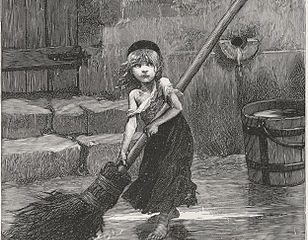Being part of a community theater is a lot of fun, but it is also challenging, very challenging. As the artistic director of a small community theater, I have learned to overcome a lot of challenges. What kind? Well, let’s see!
There are never enough men.
This is one of the top five challenges – arguably the top challenge. I am struggling with this currently as I begin production of the famous farce Charley’s Aunt. Finding men for this show has been like pulling teeth … or herding cats.
As a man myself, I think one reason we men are so scarce is that we don’t think we will be any good and are afraid of ‘failing’ on stage. Men are often needed primarily for lead roles, which means lots of lines, and/or songs, and dances. So not only do they need to perform in front of an audience, but they also have to do so while leading the show – all while possibly having little to no theater experience to begin with.
No pressure! Right…?
If you’ve never acted before it can be very daunting to get up on stage in front of an audience. Thankfully, your first performance isn’t in front of a large public audience.
It’s true.
It’s in front of the cast. Now you may not know everyone in the cast, but since this is community theater you likely know at least a few of them from your community. You will perform in front of the cast dozens of times and make many mistakes during that time.
And it’s ‘OK’. That is the point of rehearsals. No one will judge you for it because everyone does it. Just laugh it off and continue.

There are never enough volunteers.
I know what you’re thinking…
“Wait, wait, wait. Didn’t you just say there are never enough men? And now you’re complaining about not enough volunteers in general?”
Uhh… yep. Except for ladies. There are always enough ladies, for acting.
See, the thing is, theater is so much more than just acting. There is a lot that goes on away from the stage. From building sets and props to sewing costumes and setting the lighting; from baking or buying concessions to selling tickets and ushering patrons. Volunteers are needed everywhere in the theater and there is a place for everyone – whether on stage or off.
Community theaters don’t have the budget to just hire more people, they rely entirely on volunteers. Sometimes you can get a great cast together and everything in the show comes together perfectly, only to be pulling your hair out the night of performance because you realize all of your volunteers are in the cast and there is no one to work the lobby.
There have been times I’ve directed productions and come performance night I have had to work the box office, sell concessions, usher patrons, set the stage, settle last-minute emergencies, and manage the lights – all in one night. When it comes down to it, if something has to be done, someone will make sure it gets done – even if this means selling tickets while wearing a 19th-century top and jeans. You can finish getting dressed during the overture, right?
Parents, grandparents, spouses, and other family members or friends of cast and crew are excellent choices for last-minute volunteers. They will likely already be coming to the production to bring their child, etc. We have two ladies that sometimes manage our concessions table whose daughters are often in our productions. Interestingly, our sales actually do much better when they are managing it…
Scheduling can be a beast.
Because everyone is a volunteer, things such as work, school, and family always take precedence. This is how it should be, of course, but it does make scheduling a nightmare. You send out the rehearsal schedule for The Importance of Being Earnest weeks in advance and then an hour before rehearsal some of the cast notify you they can’t make it.
What do you do?
No, firing the cast is not an option. After all, you likely don’t have many – if any – extra actors!
The best thing to do is to ask cast at auditions what known and recurring events they have that might interfere with the rehearsal schedule. If you don’t ask this at auditions you can also discuss it at the first rehearsal, but it’s best to do at auditions. Utilizing this information, you can usually arrange a schedule that works for most of your cast. Unfortunately, there are always some outliers that just can’t seem to make it consistently, no matter how you rearrange the schedule. It’s important to know this information before casting because if someone can’t consistently make it to rehearsals they can’t be a primary character – even if they’re perfect for the role. Trust me on this one.
No matter how badly you (or they) want them to be a lead role, if they can’t consistently be at rehearsals it will only make everyone’s life more difficult if they are cast. From experience, I can tell you that this type of situation will also cause the other cast members to resent the unavailable actor, and that’s not a good thing for anyone.
The budget is never big enough.
A budget? What’s that?
Just kidding.
Every production should have a budget, no matter how meager. However, often in community theater, administrative details like this are ignored or forgotten. More often than not, a simple, “DON’T SPEND ANYTHING!” takes the place of a well thought-out budget.
This is why, if you watch more than one production at a community theater, you will likely begin to notice that they always use the same end table, the couch is identical (whether the play is set in the 1890s or the 1980s), and the ‘pretty-fancy’ dress makes an appearance every time. This is because most of the items available were donated by cast and crew or community members. It is rare for community theaters to purchase new items, and even those ‘new’ items they do purchase are often used. For example, when I directed Annie I purchased a table from a thrift store for the scene with the president. It was in good condition and was only $10. The alternative was to reuse the table we used for Tevye’s dinner table in Fiddler on the Roof, but I felt that wouldn’t quite be appropriate for the president.
Sometimes cast members will purchase items that are needed for the show and donate them to the theater. This is a great way to help your community theater. A $20 outfit or chair might not seem like much of an investment for you, but your theater will be able to reuse that item for years to come.
But in the end, we love it.
Yes, we pull our hair out casting men, wear twenty hats doing everything ourselves, schedule around the phantom cast member that never shows up, and can’t afford to buy a $10 prop – but we still enjoy every crazy moment of that wonderfully frustrating thing known as … Community Theater.
Break a leg!















1 comment
So true! Community theater is an asset to any community and especially to smaller towns. It can be the first and sadly, sometimes the only exposure children have to theatre arts! Help out when you can!